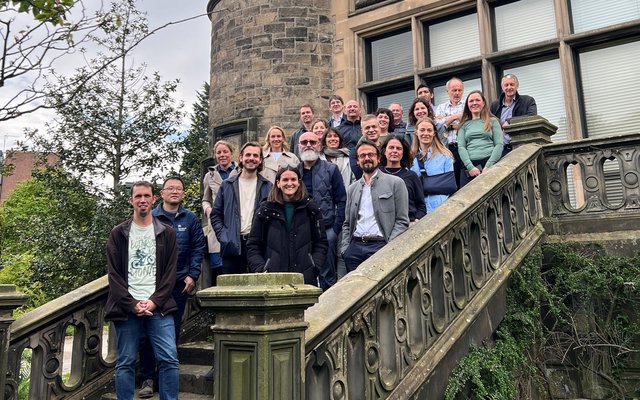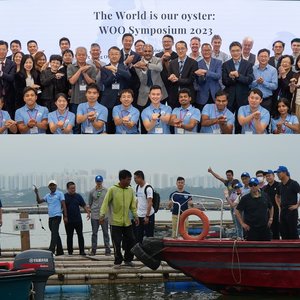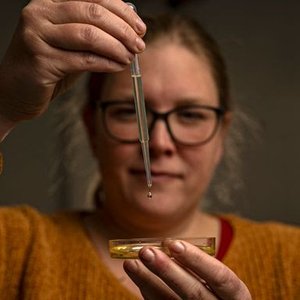After trying to understand the genetic mechanisms that affect how salmon become resistant to lice, cooperation between scientists from a range of different disciplines and backgrounds is now providing lessons that will help improve the welfare, health and sustainability of many other animals and plants.
Lice and salmon
Sea lice live by eating skin and blood. Salmon become sick and lice are a problem both for fish welfare and for the industry. But there are salmon that do well against salmon lice. “In wild coho salmon, this occurs naturally. The cells of the salmon surround the lice and kill them,” explained Diego Robledo from the Roslin Institute at the University of Edinburgh.
Coho and also pink are two salmon species native to the Pacific Ocean that combat sea lice naturally in a way that Atlantic salmon are unable to manage.
“Our genomic research is helping us understand which genes are involved in providing resistance against sea lice in the Pacific salmon species, and the next step in our project is to test the function of these genes in Atlantic salmon using gene editing. Early next year, we will be ready to introduce gene-edited Atlantic salmon to sea lice in a closed biosecure facility. We want to see whether small and precise changes disrupting the function of these genes can cause the immune cells in Atlantic salmon to encapsulate the lice and kill them as it occurs in coho, or to prevent attachment as it occurs in pink salmon,” said Nick Robinson, senior scientist at Nofima who leads the project.
The scientists will test which genes can affect whether salmon are able to repel lice infestation. They will look at what happens exactly where the lice attach themselves to the salmon and the importance of genes in stopping the lice.
“The benefits could be large in the future if it is possible to use the knowledge gained from the project to produce a resistant salmon. Lice create wounds that become infected. If we can help the fish to become resistant to lice, it has benefits for fish welfare. By potentially changing the whole epidemiology of lice infection on farms we could also relieve the lice pressure on wild salmon,” Robinson said.
Risks and benefits
In the project, the scientists will edit genes that their research suggests will keep salmon healthy and the lice away. However, is gene editing safe to use on salmon that are to be farmed and sold?
”In each instance, there needs to be a thorough evaluation of how the edit might affect the welfare and health of the fish, the aquatic ecosystem, and society. This should involve consumers and other interest groups in the decision-making process. The benefits should be weighed in relation to any potential harms,” said Robinson and Robledo.
Therefore, they have written a guide along with their collaborators from Nofima, the University of Edinburgh and Deakin University in Australia, A guide to assess the use of gene editing in aquaculture that helps assess the risks of gene editing.
“The guide was written to help assess risks and benefits so that informed decisions can be made,” said Robledo. “How to edit the genes, how to make gene editing part of a research program, how case-by-case applications might affect wild animals, how society views the approach, what benefits it might bring to animal health and welfare, ecology, environmental footprint, human nutrition, and local communities?”
“The changes we are making are quite small. We don’t take genes from other animals, we make slight adjustments to the genes that salmon already have,” explained Robinson.
Pigs and cucumber
Their gene editing guide can just as easily be used on other fish, animals and plants. “We focus on aquaculture, but the guide is just as relevant for other species,” said Robledo.
“The questions that need to be asked are the same for livestock or plants. We haven’t seen anything like this guide to gene editing risk assessment published or proposed for these other food species,” said Robinson.
The scientists emphasize that gene editing should not replace regular breeding. This is where you select animals with the best genetic variants for the traits you want, and breed these animals in favorable combinations, so that the best genetic variants are passed on to the next generation.
This research is part of a project called CrispResist. The project aims to find which genes are responsible for why salmon species like coho and pink are less affected by lice than Atlantic salmon. Atlantic salmon is the preferred species used for fish farming and around the world. The project is applying the gene-editing method CRISPR-Cas9 to test the function of genes.
Partners of the project are Nofima, Roslin Institute (University of Edinburgh), Institute of Aquaculture (University of Stirling), Rothamsted Research, Deakin University, University of Prince Edward Island, Bigelow Laboratory for Ocean Sciences, University of Gothenburg, University of Bergen, The Institute of Marine Research, Benchmark Genetics, Salmar and MOWI. The project is funded by FHF - The Norwegian Seafood Research Fund.













